Lycophyta — Club Mosses and Relatives
|
Lepidophylloides is the name given to what are most likely the leaves of the branch fossil Lepidodendron. It is common for plant fossils to have separate names for seeds/fruits, leaves and branches or bark, as whole plant fossils are rare so it is difficult to match which leaves belong to which branches or other parts.
Hazard, Kentucky
Pennsylvanian Period, Breathitt Group, 300 Ma
In situ
|
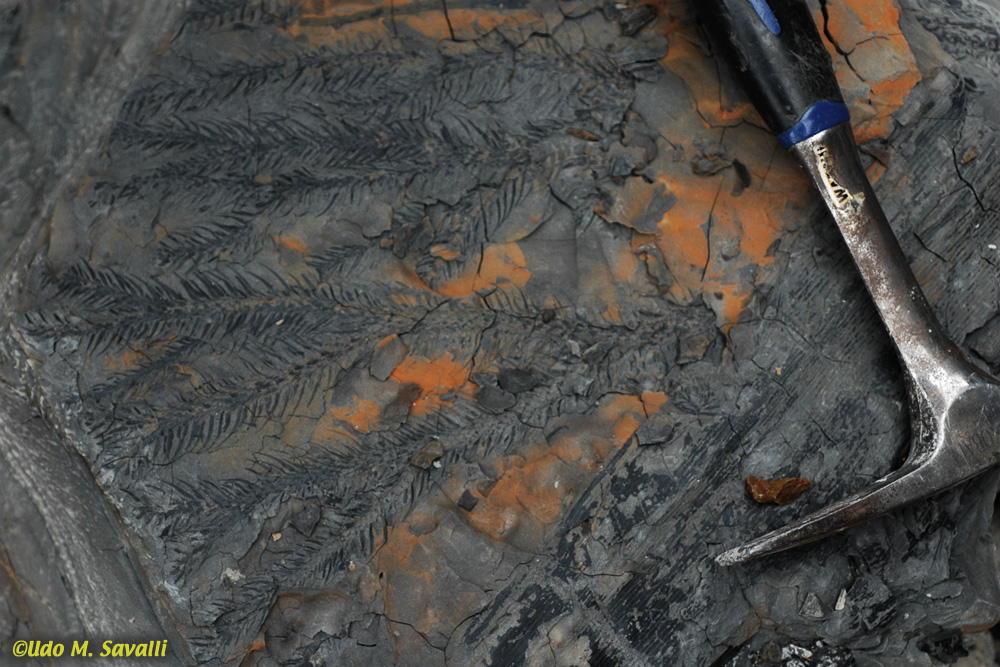
|
|
|
Lepidodendron branches.
Hazard, Kentucky
Pennsylvanian Period, Breathitt Group, 300 Ma
In situ
|
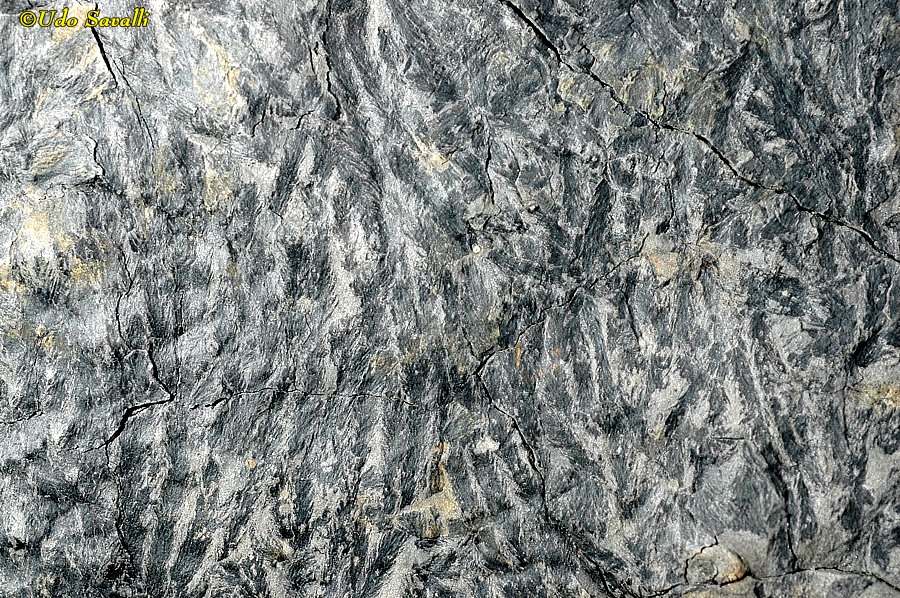
|
|
Pteridophyta — Ferns
|
Pecopteris sp. frond (leaf).
Mazon Creek, IL
Francis Creek Shale, Carbondale Formation., Middle Pennsylvanian, 300 Ma
personal collection
|
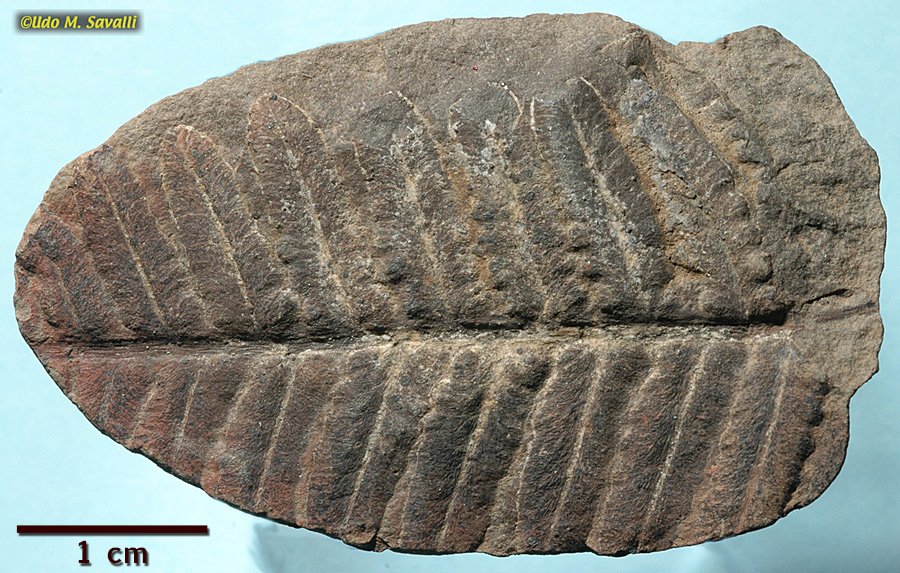
|
|
|
Section through the petrified trunk of the tree fern, Psaronius braziliensis.
Araguaina Petrified Forest, Maranhao Province, Brazil
Permian Period, 270 Ma
personal collection
|
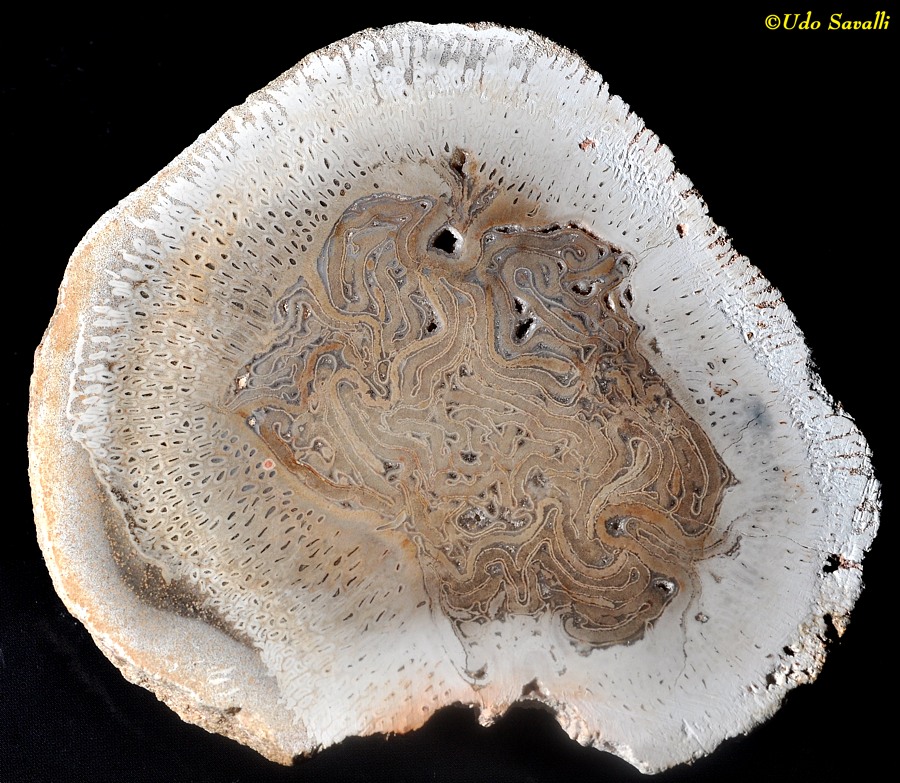
|
|
Sphenophyta — Horsetails
|
The leaves of Annularia radiata, a tree-sized horsetail; probably the same species as the trunk Calamites.
Hazard, Kentucky
Pennsylvanian Period, Breathitt Group, 300 Ma
In situ
|
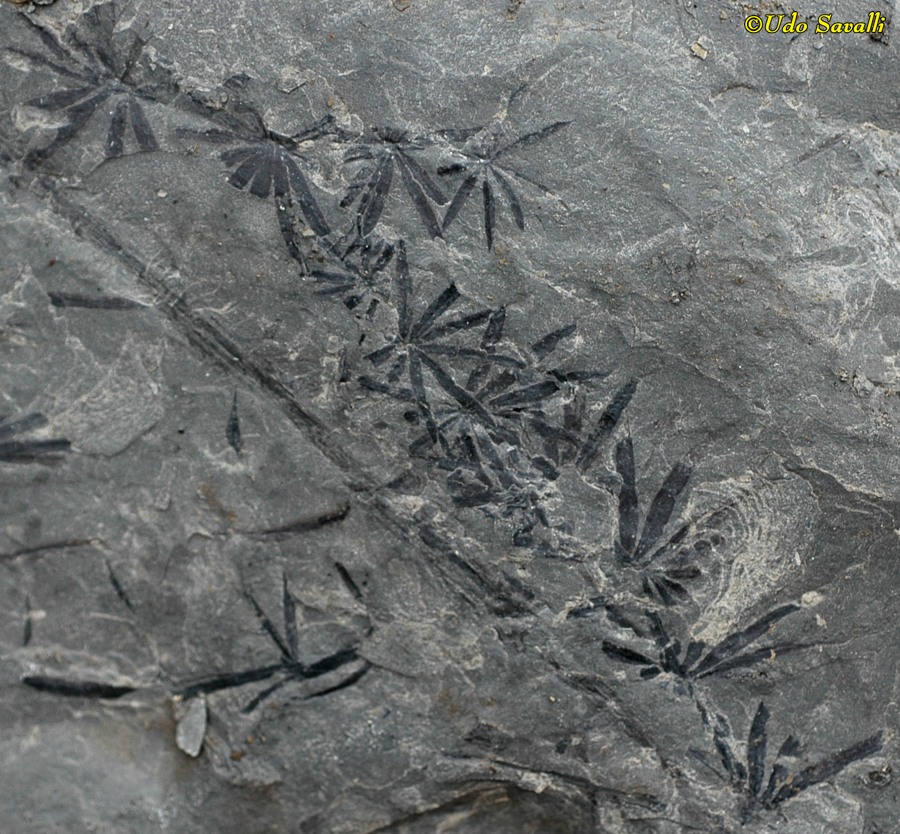
|
|
|
The trunk of the tree-sized horsetail plant, Calamites sp. (likely the same species as the Annularia leaves)
Hazard, Kentucky
Pennsylvanian Period, Breathitt Group, 300 Ma
personal collection
|
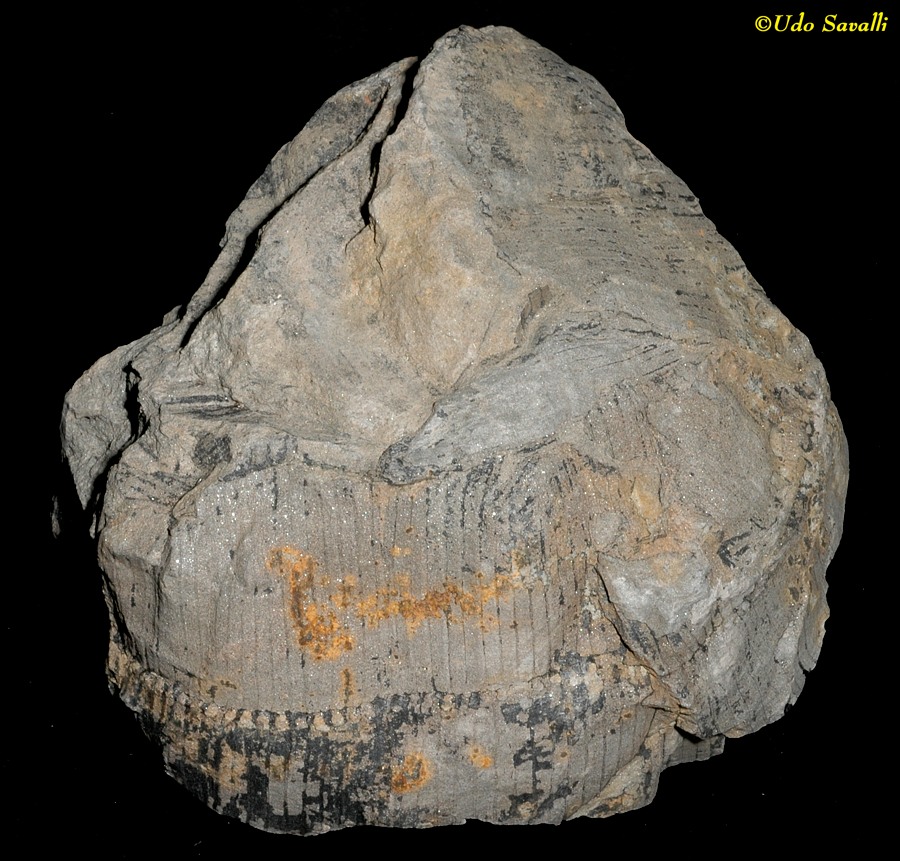
|
|
|
Horsetail, probably Annularia sp. and 2 seed or true fern leaves
Unknown
Carboniferous Period?
ASU teaching collection
|

|
|
Pteridospermales — Seed Ferns
|
Leaves of two types of seed fern, Neuropteris sp. (multiple leaflets) and Cyclopteris sp. (single leaves), as well as some branches. Seed ferns are an extinct group that have fern-like leaves, but produced seeds (ferns reproduce using spores). Seed ferns are probably a paraphyletic grouping, and their relationships to other seed plants is uncertain.
Hazard, Kentucky
Pennsylvanian Period, Breathitt Group, 300 Ma
personal collection
|
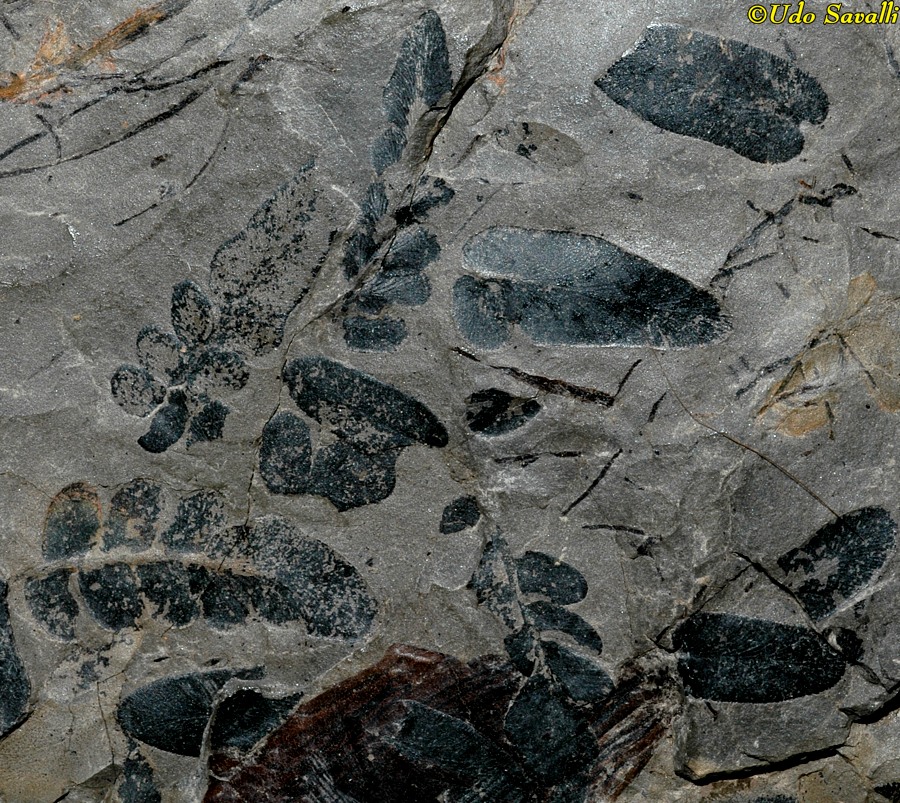
|
|
|
Leaves of the seed fern Glossopteris sp. The distribution of this genus in the sourthern hemisphere has been used as evidence for continental drift.
Australia
Permian Period
personal collection
|
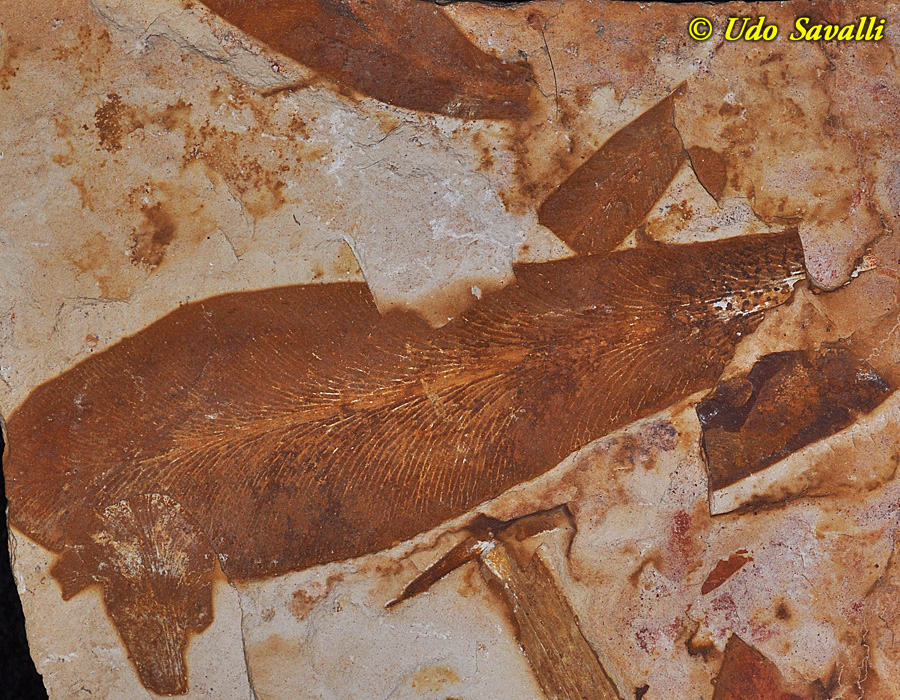
|
|
Coniferophyta — Conifers (Pines, Firs, Sequoias, Etc)
|
Araucaria mirabilis cones (whole and cut and polished). Cones that bear seeds is one of the distinctive hallmarks of the Coniferophyta
Argentina
Jurassic Period
Museum of Ancient Life
|
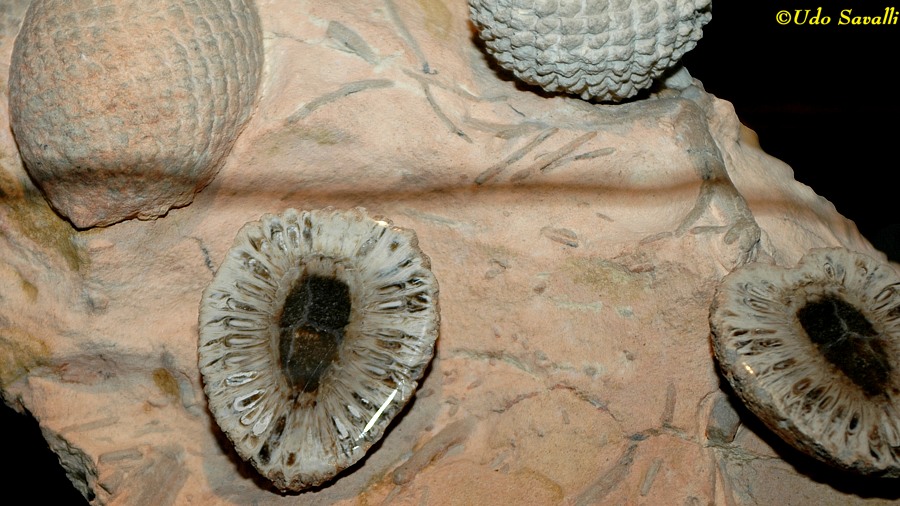
|
|
|
White Cedar (aka False Cypress), foliage and cone, Chamaecyparis linguaefolia.
Florissant Formation, Colorado
Eocene Epoch, 34 Ma
Florissant Fossil Beds National Monument
|
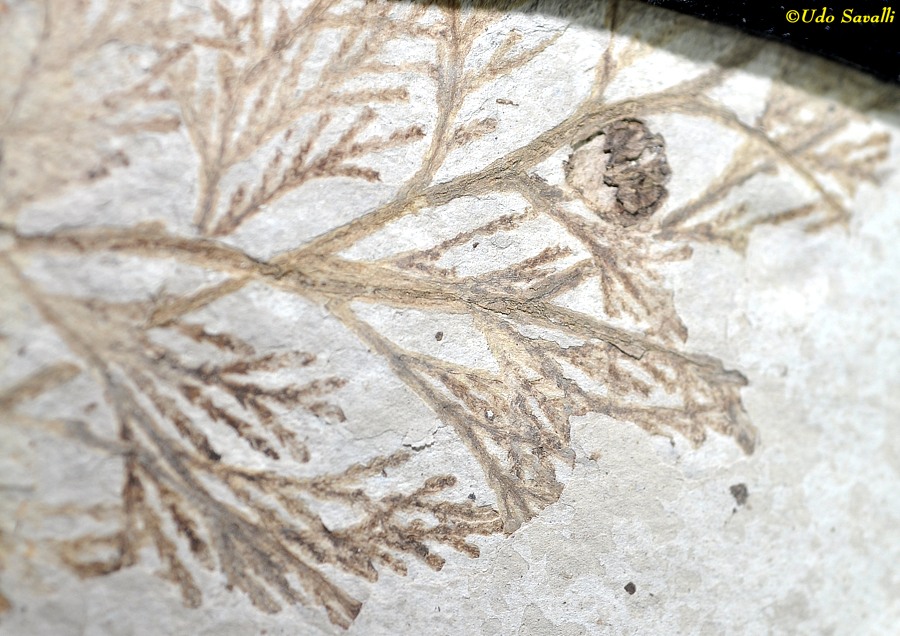
|
|
|
Pine cone fossil, Pinus sp.
Florissant Formation, Colorado
Eocene Epoch, 34 Ma
Florissant Fossil Beds National Monument
|
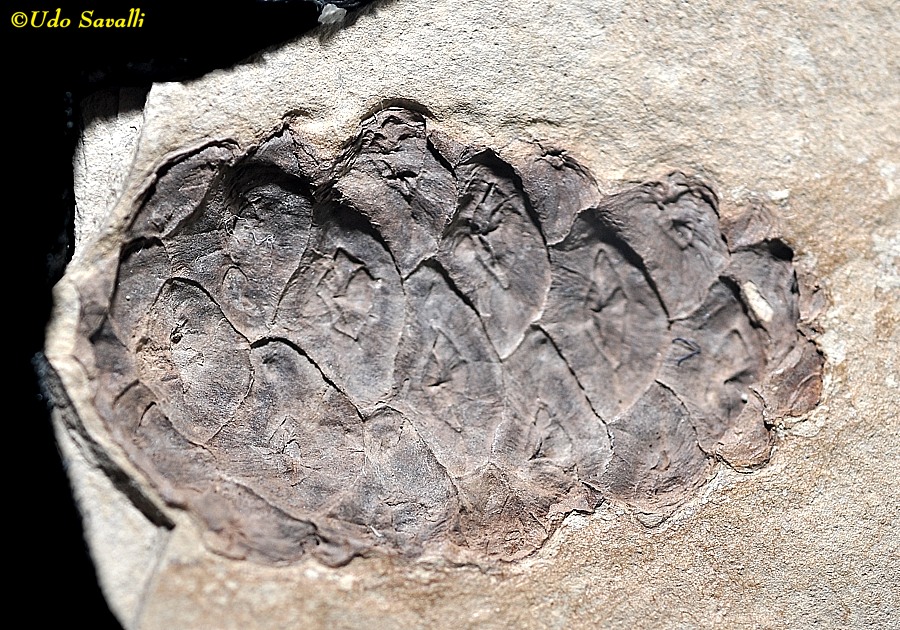
|
|
|
Petrified tree stump of the redwood Sequoioxcylon pearsalli.
Florissant Formation, Colorado
Eocene Epoch, 34 Ma
In situ
|
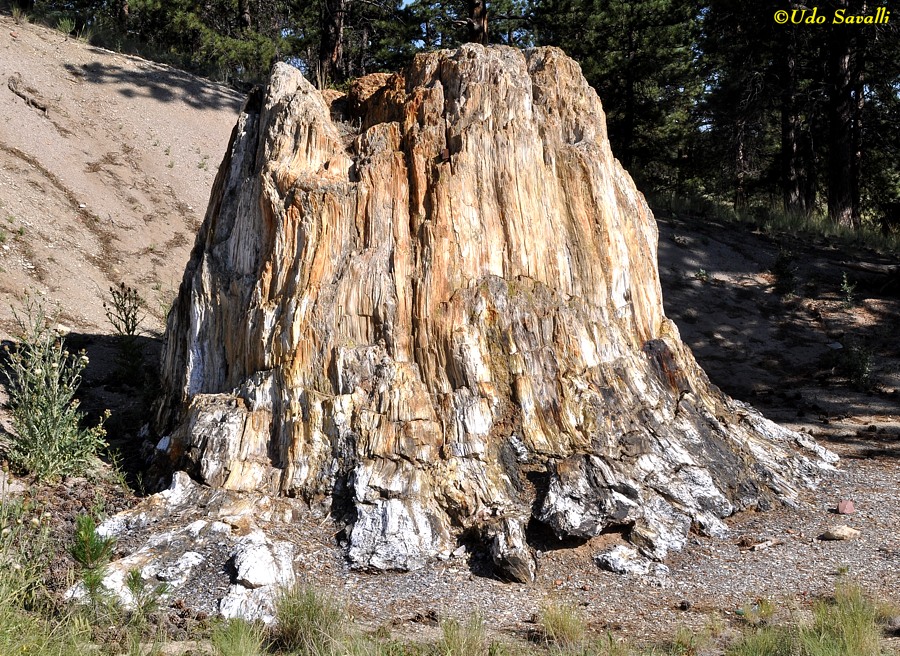
|
|
|
Petrified wood section, primarily Araucarioxylon arizonicum.
Petrified Forest National Park, AZ
Chinle Formation, late Triassic Period
In situ
|
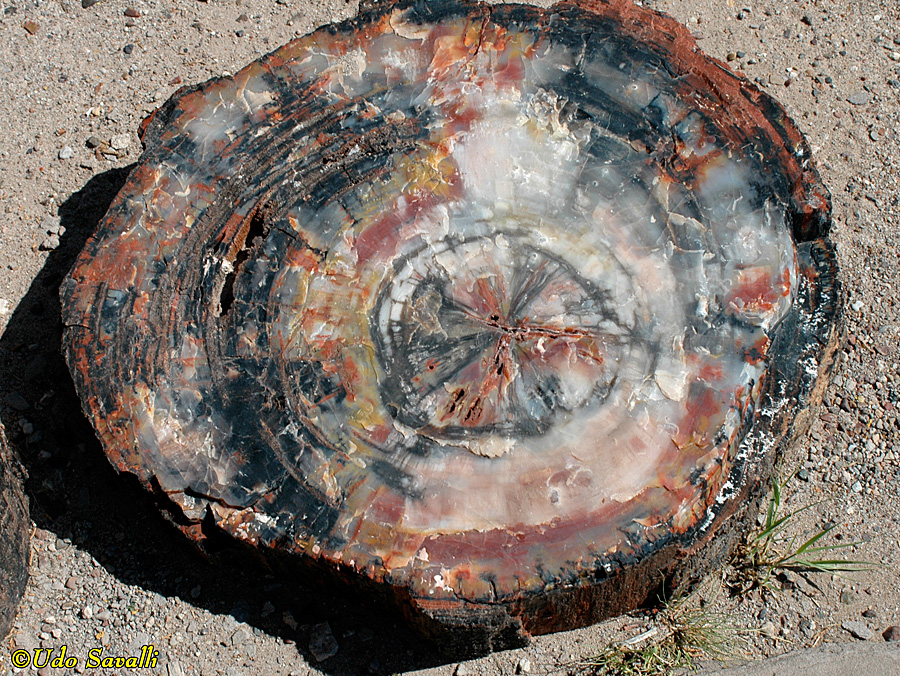
|
|
|
Petrified logs, primarily Araucarioxylon arizonicum.
Petrified Forest National Park, AZ
Chinle Formation, late Triassic Period
In situ
|
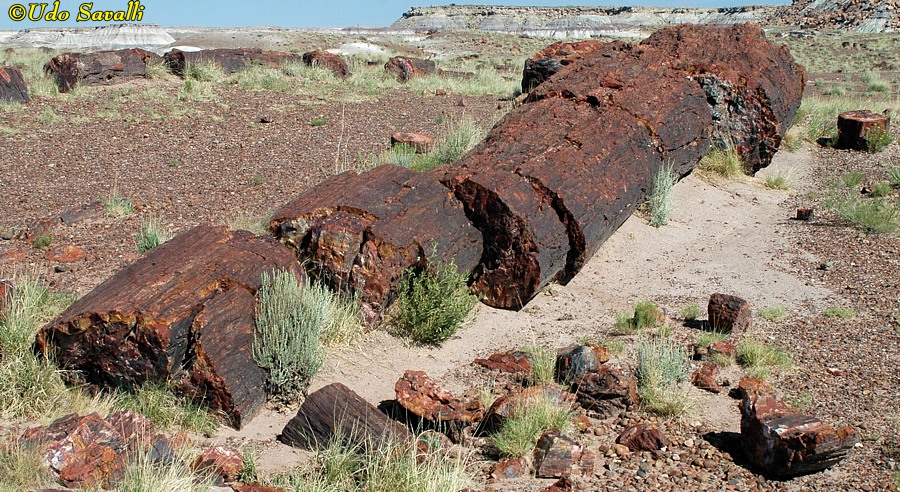
|
|
Anthophyta — Flowering Plants
|
An unidentified flower. The anthophyta are the most abundant plant group today, making up about 90% of all species. They are characterized by the presence of flowers, reproductive structures that aid in pollination, typically by attracting insects and other animals. Once fertilized, the flowers develop into fruits that protect the seeds and aid in dispersal.
Green River Formation, Wyoming
Eocene Epoch, about 48 Ma
Fossil Butte National Monument
|

|
|
|
An unidentified flower.
Green River Formation, Wyoming
Eocene Epoch, about 48 Ma
Fossil Butte National Monument
|
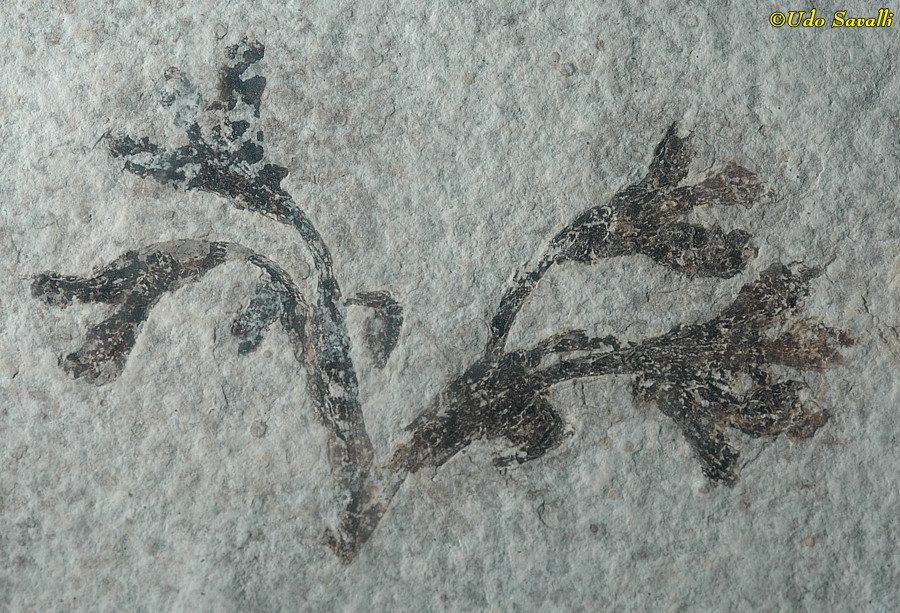
|
|
|
Another unidentified flower.
Green River Formation, Wyoming
Eocene Epoch, about 48 Ma
Fossil Butte National Monument
|

|
|
|
Florissantia speirii flower.
Florissant Formation, Colorado
Eocene Epoch, 34 Ma
Florissant Fossil Beds National Monument
|

|
|
|
Mesquite fruit (bean), Prosopis sp. (bean family, Fabaceae). Fruits are derived from the ovary of flowers are are unique to the Anthophyta (although some other seed plants have soft, fleshy cones that are superficially fruit-like)
Florissant Formation, Colorado
Eocene Epoch, 34 Ma
Florissant Fossil Beds National Monument
|

|
|
|
Unidentified fruit and seeds.
Green River Formation, Wyoming
Eocene Epoch, about 48 Ma
Fossil Butte National Monument
|
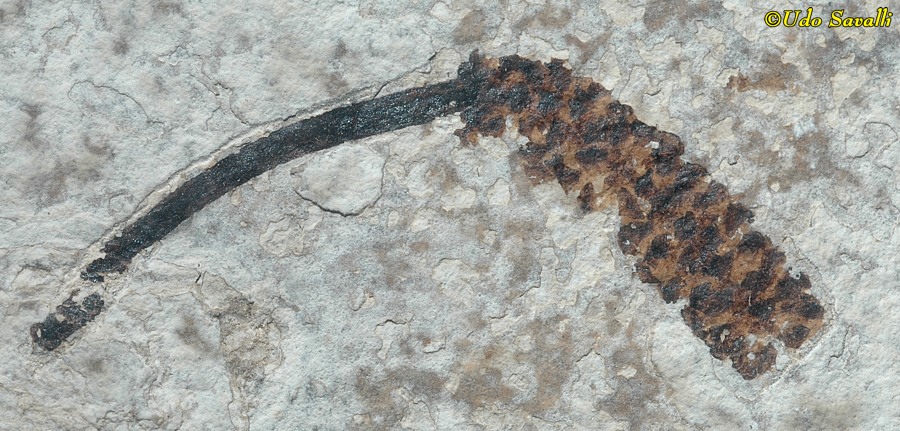
|
|
|
The fruit of the plant Lagokarpos sp. has only a single seed; the fruit forms two 'wings' that help disperse the seed in the wind.
Green River Formation, Wyoming
Eocene Epoch, about 48 Ma
Fossil Butte National Monument
|

|
|
|
Golden Rain Tree leaf and branches, Koelreuteria sp.
Florissant Formation, Colorado
Eocene Epoch, 34 Ma
Florissant Fossil Beds National Monument
|

|
|
|






















